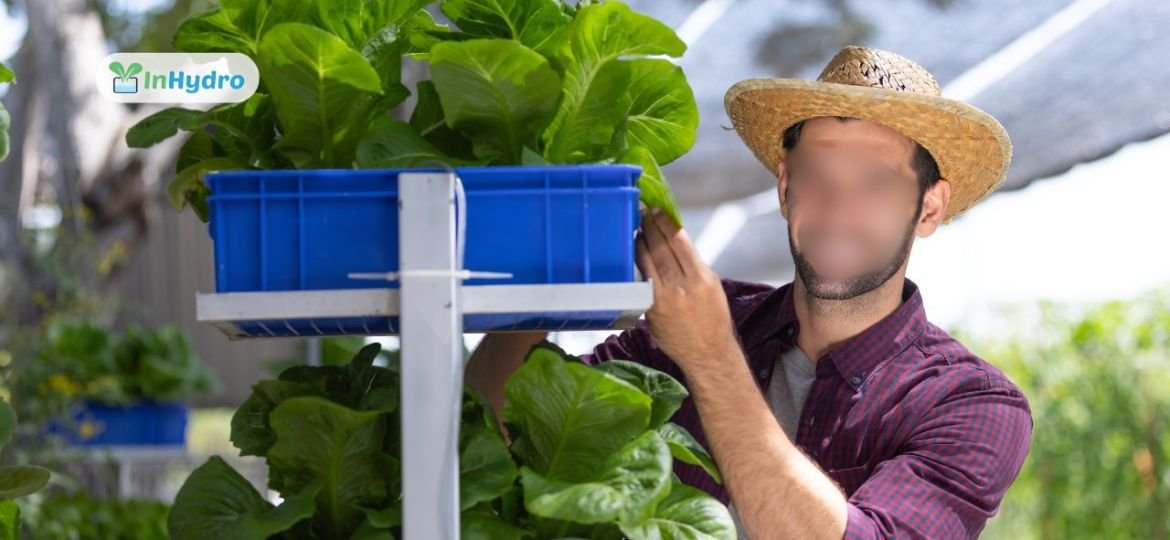
Dutch Bucket System: The Perfect Hydroponic Solution for Tomatoes
Tomatoes are one of the most popular crops for hydroponics, prized for their high yield potential and vibrant flavors. Among the various systems available, the Dutch bucket system has emerged as the gold standard for growing tomatoes in a soil-free farming environment. Its simplicity, scalability, and efficiency make it a preferred choice for both hobbyists and commercial growers.
In this article, we’ll explore the Dutch bucket system, its key features, advantages, and why it is considered ideal for tomato cultivation.
What is a Dutch Bucket System?
The Dutch bucket system, also known as bucket hydroponics, is a versatile and highly efficient hydroponic setup designed for growing larger plants like tomatoes, peppers, and cucumbers. It consists of individual buckets connected to a central nutrient reservoir. Each bucket holds a plant and a growing medium, while a drip irrigation system delivers nutrient-rich water directly to the plant roots.
The excess water drains back into the reservoir, creating a recirculating system that minimizes waste and optimizes resource use.
Key Features of the Dutch Bucket System
- Individual Plant Buckets
Each plant is grown in its own bucket, allowing for better root development and easier management of plant health. - Efficient Water Recirculation
Nutrient-rich water flows through the buckets and is collected back into the reservoir, ensuring minimal wastage. - Versatility
The system supports a wide range of crops, including tomatoes, peppers, and eggplants, making it ideal for larger, vining plants. - Customizable Setup
The Dutch bucket system is highly scalable, allowing growers to add or remove buckets based on their production needs. - Low Maintenance
With its simple design, the system is easy to install, maintain, and troubleshoot, making it suitable for beginners and experts alike.
Why the Dutch Bucket System is Ideal for Tomatoes
1. Ample Space for Root Growth
Tomatoes have extensive root systems, and the individual buckets provide plenty of room for roots to grow, preventing overcrowding and promoting healthy plant development.
2. Precise Nutrient Delivery
Tomatoes require specific nutrients for optimal growth. The bucket hydroponics design allows growers to provide precise amounts of nutrients and water, resulting in faster growth and higher yields.
3. Support for Heavy Plants
Tomato plants can grow large and heavy. The sturdy structure of the Dutch bucket system, combined with support mechanisms like trellises, makes it ideal for handling the weight of mature tomato plants and their fruit.
4. Efficient Resource Utilization
By recycling water and nutrients, the Dutch bucket system significantly reduces resource consumption, making it a sustainable choice for modern farming.
5. Disease Prevention
The system’s design minimizes waterlogging and reduces the risk of root diseases that are common in soil-based farming.
Setting Up a Dutch Bucket System for Tomatoes
Here’s a step-by-step guide to get started:
Step | Details |
1. Assemble Buckets | Use 2-5 gallon buckets with drainage holes connected to a central drain line. |
2. Add Growing Medium | Fill buckets with a suitable medium like perlite, coco coir, or expanded clay pellets. |
3. Install Irrigation | Set up a drip irrigation system to deliver nutrient solution to each bucket. |
4. Connect Reservoir | Ensure all buckets drain into a central reservoir for water recirculation. |
5. Plant Tomatoes | Transplant tomato seedlings into the buckets, ensuring roots are well-covered by the medium. |
6. Provide Support | Install trellises or stakes to support tomato vines as they grow. |
Advantages of Using Dutch Bucket System for Hydroponics
- Cost-Effectiveness
The simple design of the Dutch bucket system makes it affordable to set up and operate, especially for small-scale growers. - Scalability
Whether you’re cultivating a few tomato plants at home or running a commercial farm, the system can be easily scaled to suit your needs. - Sustainability
By conserving water and reducing the need for soil and pesticides, the Dutch bucket system promotes sustainable farming practices. - Consistency in Yield
The controlled environment ensures consistent growth and high-quality yields throughout the year, unaffected by weather conditions.
FAQs
Q: Can I grow other crops in the Dutch bucket system?
A: Yes, the system is versatile and can accommodate various crops, including cucumbers, peppers, and eggplants.
Q: What growing medium works best for tomatoes in bucket hydroponics?
A: Perlite and coco coir are popular choices due to their excellent water retention and aeration properties.
Q: How often should I check nutrient levels?
A: It’s recommended to check nutrient and pH levels daily to ensure optimal plant growth.
Q: Do tomatoes need to grow lights in a Dutch bucket system?
A: If grown indoors, supplemental grow lights are essential to provide the light intensity tomatoes need for flowering and fruiting.
Why Choose InHydro for Dutch Bucket Systems?
At InHydro, we offer premium-quality Dutch bucket systems tailored for efficient and sustainable hydroponics farming. Whether you’re growing tomatoes, peppers, or any other crop, our systems are designed for maximum productivity and ease of use. With InHydro, you’ll have access to expert advice, reliable equipment, and ongoing support to ensure your farming success.
Conclusion
The Dutch bucket system has redefined the way tomatoes and other crops are cultivated in soil-free farming environments. Its efficiency, scalability, and ability to deliver high yields make it a preferred choice for modern growers.
With InHydro’s state-of-the-art bucket hydroponics solutions, you can transform your farming practices and achieve consistent, high-quality harvests. Take the first step toward sustainable farming with InHydro today!

